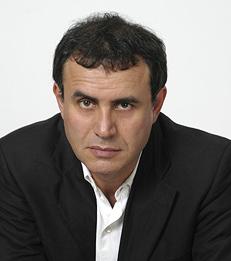Opinion
Goldilocks Is Dying
—

By Nouriel Roubini
How will the global economy and markets evolve over the next year? There are four scenarios that could follow the “mild stagflation” of the last few months.
The recovery in the first half of 2021 has given way recently to sharply slower growth and a surge of inflation well above the 2% target of central banks, owing to the effects of the Delta variant, supply bottlenecks in both goods and labor markets, and shortages of some commodities, intermediate inputs, final goods, and labor. Bond yields have fallen in the last few months and the recent equity-market correction has been modest so far, perhaps reflecting hopes that the mild stagflation will prove temporary.
The four scenarios depend on whether growth accelerates or decelerates, and on whether inflation remains persistently higher or slows down. Wall Street analysts and most policymakers anticipate a “Goldilocks” scenario of stronger growth alongside moderating inflation in line with central banks’ 2% target. According to this view, the recent stagflationary episode is driven largely by the impact of the Delta variant. Once it fades, so, too, will the supply bottlenecks, provided that new virulent variants do not emerge. Then growth would accelerate while inflation would fall.
Read the full Project Syndicate article.
___
Nouriel Roubini is a Professor Emeritus of Economics and International Business and the Robert Stansky Research Faculty Fellow.
The recovery in the first half of 2021 has given way recently to sharply slower growth and a surge of inflation well above the 2% target of central banks, owing to the effects of the Delta variant, supply bottlenecks in both goods and labor markets, and shortages of some commodities, intermediate inputs, final goods, and labor. Bond yields have fallen in the last few months and the recent equity-market correction has been modest so far, perhaps reflecting hopes that the mild stagflation will prove temporary.
The four scenarios depend on whether growth accelerates or decelerates, and on whether inflation remains persistently higher or slows down. Wall Street analysts and most policymakers anticipate a “Goldilocks” scenario of stronger growth alongside moderating inflation in line with central banks’ 2% target. According to this view, the recent stagflationary episode is driven largely by the impact of the Delta variant. Once it fades, so, too, will the supply bottlenecks, provided that new virulent variants do not emerge. Then growth would accelerate while inflation would fall.
Read the full Project Syndicate article.
___
Nouriel Roubini is a Professor Emeritus of Economics and International Business and the Robert Stansky Research Faculty Fellow.
